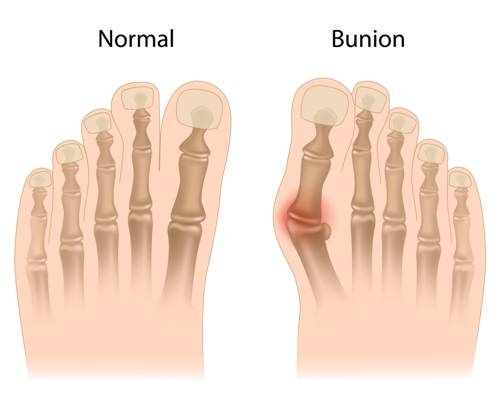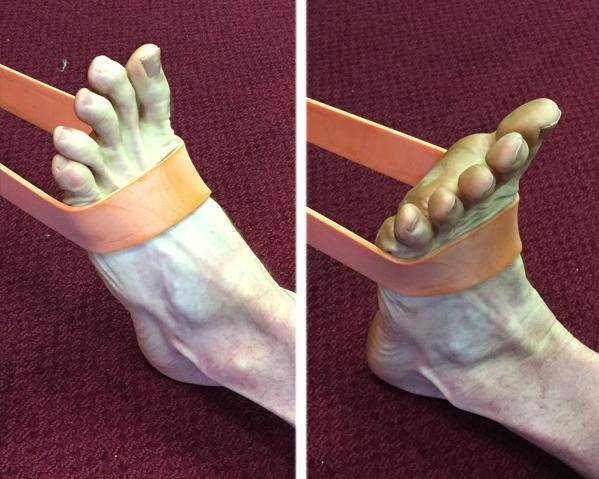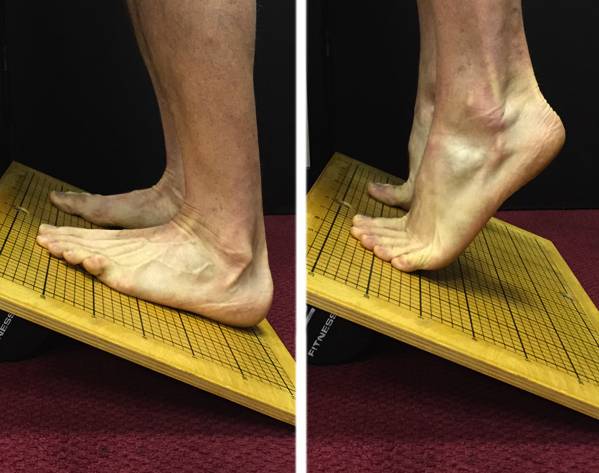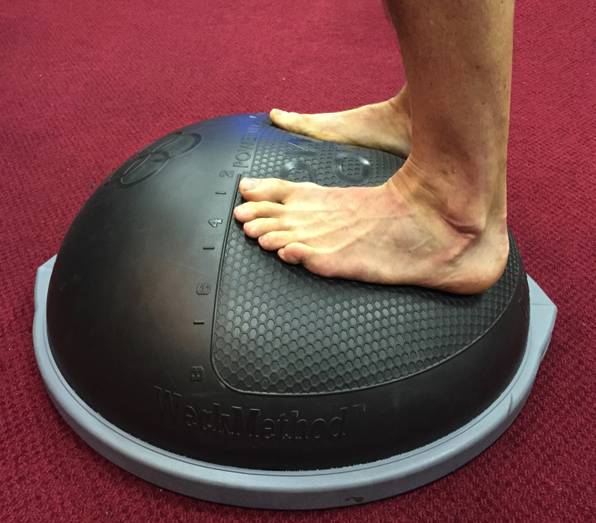“Your feet are your foundation.” We hear it all the time, but what does that mean? Let’s address three basic questions about healthy feet:
- What are some common foot issues in athletes?
- How do your feet impact the rest of your body?
- How do you strengthen your feet and prevent injuries?
Common Foot Injuries in Athletes
If your feet aren’t well cared for, bad things happen. In athletes, problems most frequently arise from overuse. Physical therapist Meghan Rovig outlined four of the most common overuse issues she sees in athletic populations:
- Turf toe: A common condition caused by repeated hyperextension of the big toe. It is most common in people who wear lightweight shoes or who hyperextend their big toe frequently during repeated actions.
- Bunions: Often associated with over-pronation. This condition is also known as “Old Lady Toe,” and is characterized by angulation of the big toe towards the other toes. You may experience tenderness, pain, and inflammation.
- Stress fractures: Tend to occur in the second and third toes, and are characterized by swelling and pain on the top of the foot. Poor diet combined with overtraining is one of the most common causes of stress fractures.
- Plantar fasciitis: Inflammation and micro-tearing of the fascia. Plantar fasciitis may be caused by repeated stresses like running and jumping. Tight calf muscles and weak supporting musculature in the foot can put you at higher risk.
READ THE ARTICLE: 4 Common Foot Injuries in the Athlete

The problems that result from foot neglect aren’t limited to the plantar region. Just as an unstable foundation affects the entire structure of the building it supports, problems with our feet replicate in other parts of our bodies. Chiropractor Lindsey Mathews explained this relationship between the feet and the rest of the body:
When a person is having foot and ankle issues, observing their gait along with applying a little bit of foot palpation usually reveals the answers. If any joint in the foot and ankle is not operating optimally, then the load is transferred elsewhere and the foot must compensate. This compensation pattern affects everything from the knee, to the hip, and even the lumbar spine.
READ THE ARTICLE: Understanding and Caring for Your Feet
By caring for our feet, we are also caring for the whole chain they affect. So how do we do that? Here are three ways to give your feet some love and prevent injuries:
Strengthening
Coach David Weck described several ways to strengthen your feet in his article, 5 Foot Strengthening Exercises to Improve Speed, Power, and Balance. He suggested the following exercises using bands, boards, and balance trainers to build strength.
Bands: Take a resistance band (flat bands work best), fasten it to a secure point, and place the other end of the band around the top of your foot right below your toes. From a seated position, with legs extended straight on the floor, create tension on the band and pull your foot to your shin. You can perform reps by flexing and extending your foot, or for more of a challenge, move your body back while maintaining a dorsiflexed position to create more tension.

Boards: Take a slant board, or if you don’t have one use a flat board placed on something to create an angle (a rolled towel or a yoga block can work well). Position the slant board near a wall or doorframe so you can lean slightly forward and place your feet on the board with your toes facing up. With a slight lean forward perform calf raises, holding the top position to create maximum extension of your toes and mindfully engage the bottoms of your feet.

Balance Trainer: Use a BOSU ball or a BOSU Elite, if you have one. The Elite has a very firm dome that loads the feet with increased resistance. Position your feet back on the dome of the BOSU ball so your toes are higher than your heels. From this position (dorsiflexion with inversion) perform squats, weight shifts, running in place, and jumps.

Movement
Moving your feet on a regular basis can prevent overuse injuries. If you sit at a desk for eight hours and then go to the gym to do box jumps, you’re setting your poor feet up for failure.
Toe exercises are some of my favorite ways to get my feet moving in different ways. You can do these exercises anywhere, and it’s challenging and oddly enjoyable to try to locate each individual toe. Yoga instructor Rachel Hector detailed a simple exercise for your toes and explained why you might have a hard time doing it:
Stand with your feet a comfortable distance apart. Try to lift just the big toe on both feet, keeping the other toes down. Then try to do the exact opposite: lift all the toes but the big toes. Keep switching back and forth.
If this movement doesn’t come right away, don’t lose hope. It took a while for your feet to be the way they are and it might take a while to change them. As you get better at this, try it in different standing yoga poses and notice the effects. Most people who pronate, or roll to the inner arch, have a hard time lifting the big toes and most people who supinate, or roll on to the outer edges of the foot, have a hard time lifting the other toes.
READ THE ARTICLE: Feet Are Our Foundation: 5 Ways to Strengthen Them
Exposure
Controversial as minimalist running may be, a little barefoot time here and there is definitely healthy. In his article, Barefoot Basics: How to Regain Your Footing, MovNat trainer Steve Gangemi explained the benefits of baring your feet during your training:
By training barefoot, you are improving the strength, mobility, and proprioception of your feet. Proprioception refers to the knowledge of the position and movement of the body, and the ability to react accordingly.
When you wear shoes you lose this proprioceptive input. This means if something unexpected happens – you hit a piece of uneven ground or you make a quick cut while playing sports – your body won’t be able to perceive this change and react accordingly to protect itself from injury.
Steve shared the following drills to get started in barefoot training, demonstrated by MovNat founder Erwan Le Corre:
Strengthening, mobilizing, and exposing your feet will go a long way in preventing new injuries and healing damage that has already been done. I would also add my personal favorite to the list: a nightly foot massage. Feet need rest and recovery, too.
Photos 1 and 2 courtesy of Shutterstock.






